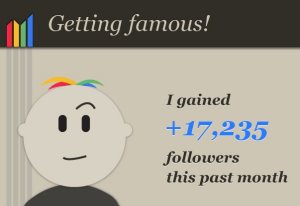I have heard some really bad advice about content creation, content marketing, and brand journalism. While the Internet is filled with some great advice, there’s a lot of crappy advice as well that I’ve overheard, read online, or been directed to do by clients that I’ve strongly advised against. What follows are my eight least favorite pieces of advice on content production. Be sure to add yours in the comments below.
“It’s all about video”
“You have to create video. Everything is video now.”
 Once again, this is uttered as if television hasn’t existed for 85 years. Video? What is this “video” you speak of? If video was the end all be all it would have rendered text, audio, and images as worthless. They’re not, and that’s why video is not the only way to communicate your story and message.
Once again, this is uttered as if television hasn’t existed for 85 years. Video? What is this “video” you speak of? If video was the end all be all it would have rendered text, audio, and images as worthless. They’re not, and that’s why video is not the only way to communicate your story and message.
The irritation of this advice as is the problem with most of the listed advice is it’s uttered without inquiry into the goals or desires of the company and its audience.
Yes, video is valuable, but it’s not necessarily for everyone. What’s the best way to convey your story and information? Is your business visual? Do you have really interesting stuff to show? Would a picture of your product and its workings be a far easier way to demonstrate what it is you do? Do you have dynamic and smart people who work at your company that are great on camera? If yes to any and all of these, then create video. If not, then you don’t need video.
“Create viral content”
 I have a video on my old YouTube channel that has almost 400,000 views. It’s viral, but has absolutely nothing to do with my business, and therefore it’s done absolutely nothing to help my business. That’s what most viral content will do for your business too. Nothing. Unless you’re in the business of selling cat toys, an adorable cat video is not going to do anything for your business (Read “Popular Videos Aren’t a Sign of Impending Business Success”).
I have a video on my old YouTube channel that has almost 400,000 views. It’s viral, but has absolutely nothing to do with my business, and therefore it’s done absolutely nothing to help my business. That’s what most viral content will do for your business too. Nothing. Unless you’re in the business of selling cat toys, an adorable cat video is not going to do anything for your business (Read “Popular Videos Aren’t a Sign of Impending Business Success”).
Asking a video producer to “create a viral video” is the equivalent of asking a film producer to “make an Oscar-winning movie.” We all know that’s not how content is produced. You try to produce the best content you possibly can and hope for the best. At Spark Media Solutions we have techniques to architect virality into content, meaning we have methods to insure a certain level of pass along, but in no way do we say to our clients that we create viral content. The reason everyone wants viral content is they want heavy distribution without having to pay for it. Who wouldn’t want that? But planning for viral often leads you down a completely inappropriate path where you’re looking for ways to “game the system” and not necessarily create videos that are appropriate for your business.
“You have to be on __________”
 Whenever a hot new platform comes out, you will inevitably hear an expert tell you that you have to be on this new platform (e.g., Vine and Pinterest). To prove their point they’ll parrot out a bunch of statistics as to the new platform’s usage and growth plus point to a few examples of a few companies who have done really well. Here’s one thing no one takes into account with these new platforms. Someone has to be on the front page on day one. So someone is going to be insanely successful by the mere presence of being there. For example, every now and then you hit the social media lottery and your identity is the one recommended on Facebook, Google+, or Twitter. When that happens you just start getting thousands of followers for no apparent reason. It has to happen to someone, and whomever it happens to they’re the ones who will be touted as success stories.
Whenever a hot new platform comes out, you will inevitably hear an expert tell you that you have to be on this new platform (e.g., Vine and Pinterest). To prove their point they’ll parrot out a bunch of statistics as to the new platform’s usage and growth plus point to a few examples of a few companies who have done really well. Here’s one thing no one takes into account with these new platforms. Someone has to be on the front page on day one. So someone is going to be insanely successful by the mere presence of being there. For example, every now and then you hit the social media lottery and your identity is the one recommended on Facebook, Google+, or Twitter. When that happens you just start getting thousands of followers for no apparent reason. It has to happen to someone, and whomever it happens to they’re the ones who will be touted as success stories.
“Build content to increase followers, engagement, and/or views”
 When we see numbers increase we think we’re doing the right thing. But honestly, if you just open an account on any social network and do literally nothing you will see your numbers go up. Post a few things and you’ll see those counts go up a little faster. Social media numbers go up regardless, and we get excited about them and tout them as levels of “success.” They’re often not. They’re usually just vanity metrics because they look good, but in reality they don’t show how your content posting translates into actual business.
When we see numbers increase we think we’re doing the right thing. But honestly, if you just open an account on any social network and do literally nothing you will see your numbers go up. Post a few things and you’ll see those counts go up a little faster. Social media numbers go up regardless, and we get excited about them and tout them as levels of “success.” They’re often not. They’re usually just vanity metrics because they look good, but in reality they don’t show how your content posting translates into actual business.
The true mark of artistic success is how many true fans you have. A true fan is someone who is so dedicated to your work that they will purchase whatever you put out, attend your next show, and go out of their way to let everyone know about you. Journalist Kevin Kelly noted that in the Internet age an artist can make a living if they can assemble 1,000 true fans. The real advice should be create content to grow and retain true fans.
You have to be publishing every single day/X times a week
 Oddly, I get this more as a question than a piece of advice. I’m always asked, “How many times a week should we post?” That all depends on what information you’re disseminating and what your audience demands. You could get by just posting one article a month as the new online magazine MATTER does. They’re building a very strong brand on just that kind of content development. Yes, more is always better, but not at the sacrifice of quality. So if you can make something twice as good by posting half as much, then focus on making it better.
Oddly, I get this more as a question than a piece of advice. I’m always asked, “How many times a week should we post?” That all depends on what information you’re disseminating and what your audience demands. You could get by just posting one article a month as the new online magazine MATTER does. They’re building a very strong brand on just that kind of content development. Yes, more is always better, but not at the sacrifice of quality. So if you can make something twice as good by posting half as much, then focus on making it better.
Get an intern to do it
 This falls under the same category of “What’s the cheapest we can pay for this content?” There are many media sites that have figured out how to run a business on producing the cheapest content possible. Publish a ton of content that drives traffic and place advertising around it. It’s simply an arbitrage type system. If a page costs me $X and I will make an average of $X +$1 through advertising then it’s worth it to me to produce as much content at $X as possible.
This falls under the same category of “What’s the cheapest we can pay for this content?” There are many media sites that have figured out how to run a business on producing the cheapest content possible. Publish a ton of content that drives traffic and place advertising around it. It’s simply an arbitrage type system. If a page costs me $X and I will make an average of $X +$1 through advertising then it’s worth it to me to produce as much content at $X as possible.
If that’s not your business model, which is most of us who are not trying to make money from a media site, then avoid the low cost content technique. If you’ve spent a fortune building your company brand, cheap content will quickly reverse that trend and you’ll be spending so much more money trying to build back a brand you’ve tarnished with low rent content.
Make sure it’s perfect before you put it out there
 In certain situations this may be true, but so much online content thrives on imperfections. It’s the way content evolves and people get to touch it and engage with it. This is not the same as producing cheap content.
In certain situations this may be true, but so much online content thrives on imperfections. It’s the way content evolves and people get to touch it and engage with it. This is not the same as producing cheap content.
Extremely popular blogger Chris Brogan has a litany of posts that get hundreds of comments while some of his posts only get a few comments. In an interview I did with Brogan in my “Be the Voice” series, I asked him why there was such a great dichotomy.
“I usually write my blog posts so that they’re not entirely finished. I leave a lot of open space for you to add your opinion. And the reason I do that is because I want you to feel like there’s some contribution and some give or take to the experience. I’m not writing thesis and essay and editorials. I’m writing things where I have something in my mind and I want to share it and get your ideas too,” said Brogan. He does it because people love to give their opinion.
If you want some engagement with your content, it might be a good idea to not make it perfect. Also, you may have limited information and won’t have the time to make it perfect. In some situations it might be best to just put what you know out there and create the piece as a living story that you’ll update over time. But this is always dependent on what’s most appropriate for your brand. If you’re a medical outfit and you put information out there that hasn’t been thoroughly vetted then that could not only damage your brand but also bring about a lawsuit.
“Create great content” or “It’s about quality, not quantity”
 This moronic simplistic advice is not advice. It’s like telling someone at Goldman Sachs to “buy low and sell high.” Sadly, experts I truly respect in social media have uttered this completely useless tome. It’s a declarative statement that is the definition of obvious. There is no advice here yet we’ve heard both of these recommendations parroted many times with absolutely no direction afterwards.
This moronic simplistic advice is not advice. It’s like telling someone at Goldman Sachs to “buy low and sell high.” Sadly, experts I truly respect in social media have uttered this completely useless tome. It’s a declarative statement that is the definition of obvious. There is no advice here yet we’ve heard both of these recommendations parroted many times with absolutely no direction afterwards.
The secret to creating great content is:
Hire really good and experienced writers, producers, and photographers, who will probably be expensive, to produce the content for you.
Yeah, I know you wish it was something else.
Conclusion
Ultimately, what is arguably most annoying about the advice is in takes into very little account the goals and audience of the company creating the content. Before anyone gives you content advice about your business, make sure they know your business and your audience.
Lastly, if it sounds like bad advice and something that would make you feel really dirty, it probably is.
Creative Commons photo credit to Racum, dougwoods, melenita2012, justinmathew21, DafneCholet, adpowers, tawest64, Smoobs.




